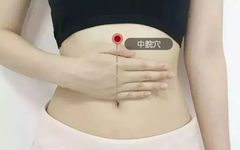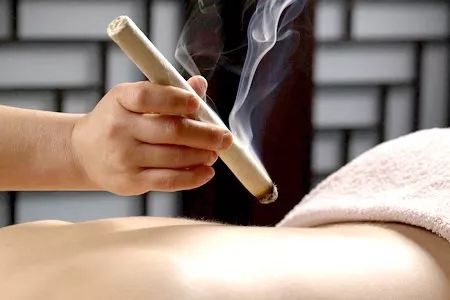Summary of TCM Courses
01
All Courses by Ni Haixia
02
Complete Guide to TCM Treatments for Common Diseases
03
Focused Study on TCM Topics
04
Online Reading of TCM Learning Books
Moxibustion has become a popular health practice among modern people due to its green, natural, safe, and side-effect-free properties. Generally, for different ailments, TCM practitioners will recommend multiple acupuncture points. With so many points, which one should be treated first?
Many people may not realize that this is similar to taking Western medicine, where timing (before or after meals) can affect the absorption of the medication. Likewise, the order of moxibustion points significantly influences its therapeutic effects. Today, we will discuss the sequence of moxibustion!
1
Sequence of Moxibustion Points
Sun Simiao, known as the “King of Medicine,” clearly recorded in his work “Qianjin Fang” that moxibustion should follow the principles of treating Yang before Yin, left before right, and upward before downward.
How are the various parts of the human body classified into Yin and Yang?
As an agricultural nation, ancient people generally lived with their faces toward the soil and their backs to the sky. Therefore, TCM categorizes the back and upper body as Yang, while the abdomen and lower body are considered Yin. In the theory of Yin and Yang, the head is Yang, and the feet are Yin; the left side is Yang, and the right side is Yin.
Thus, according to traditional TCM theory, the order of moxibustion is generally:
First treat the upper body, then the lower body
First treat the back, then the abdomen
First treat the head and torso, then the limbs
First treat the left side, then the right side
When performing moxibustion for daily health care, following the above methods will yield excellent results. Of course, TCM emphasizes dialectical treatment, and many methods for regulating ailments are not singular; generally, the priority is to alleviate symptoms first, such as treating the Ah Shi point and other key points.
2
Optimal Timing for Moxibustion
According to the “Neijing: Ling Shu,” the ancients divided the day into four periods corresponding to spring, summer, autumn, and winter: morning is spring, noon is summer, sunset is autumn, and midnight is winter.
The specific time divisions are as follows:
From 3 AM to 9 AM is the spring of the day, called “Day Spring”
From 9 AM to 3 PM is the summer of the day, called “Day Summer”
From 3 PM to 9 PM is the autumn of the day, called “Day Autumn”
From 9 PM to 3 AM is the winter of the day, called “Day Winter”
In the morning, both nature and the body’s Yang energy begin to rise; utilizing this time for moxibustion can yield twice the result with half the effort, especially for those with Yang deficiency or Qi deficiency, such as those who feel cold, have cold hands and feet, low immunity, or loose stools.
Of course, the timing for moxibustion varies according to different constitutions and ailments. For example, to regulate spleen and stomach function, moxibustion can be performed between 9-11 AM, for kidney nourishment between 5-7 PM, and for insomnia before sleep.
Generally, the best times for moxibustion for health care are: 10-11 AM; 2-4 PM.
3
Seasonal Moxibustion: Best in Summer and Winter
1. In terms of seasons, moxibustion is most effective in summer and winter.
Summer, especially during the Three Fu Days, is the time when Yang energy is at its peak. At this time, the body’s Yang energy is strongest, and metabolism is vigorous. The Yang energy from the heavens descends, and the earth’s heat rises, creating a convergence of energies. During this time, the body should align with the natural order and nurture Yang.
Moxibustion at this time can not only resist summer heat and humidity but also store Yang energy for autumn and winter, ensuring sufficient Yang energy to combat Yin and cold, thereby enhancing disease resistance and reducing illness throughout the year.
Winter, especially during the Three Jiu Days, is the coldest time of the year. At this time, Yang energy is concealed, Qi and blood circulation is poor, skin is dry, and pores are closed. Performing moxibustion during this time can warm Yang, boost Qi, and enhance resistance.
Therefore, performing moxibustion every winter, especially during the Three Jiu Days, can strengthen and consolidate the effects of summer moxibustion.
2. Throughout the year, moxibustion during the solar terms is most effective.
Humans are influenced by the energies of heaven and earth. During the solar terms, the changes in these energies are significant.
Spring and summer are Yang, with spring being warm and summer hot; the transition from spring to summer signifies a shift from rising to floating. Autumn and winter are Yin, with autumn being cool and winter cold; the transition from autumn to winter signifies a shift from gathering to storing.
However, the transition from summer to autumn is different; summer is Yang and autumn is Yin, requiring a pivot. This pivot is the Shao Yang, which is the fire of the heart, and when the fire energy is activated, it can reverse the tendency of Yang energy to float upwards and instead gather.
The same applies to the transition from winter to spring; winter is Yin and spring is Yang, and a pivot is also needed. This pivot is the Shao Yin, which is the fire of the ruler, and when the fire energy is activated, it can reverse the tendency of Yang energy to be concealed and instead rise.
Thus, the human body has two pivots: one is Shao Yang and the other is Shao Yin, both of which belong to fire. Humans rely on fire as a pivot because life itself is a manifestation of Yang energy. Life originates from the sun, which is fire, and thus humans are also established by fire.
The changes of Yin and Yang in life require fire energy to act as a pivot.
In nature, there are changes in the rise and fall of Yin and Yang; Yang rises and Yin falls, reaching extremes and then reversing. Therefore, the two solstices (summer and winter) are significant nodes; the balance of rise and fall, equality of Yin and Yang, and the two equinoxes (spring and autumn) are also important nodes; additionally, the four beginnings (Lichun, Lixia, Liqiu, Lidong) are also major nodes.
The six Qi changes also have six nodes, including the Great Cold, Spring Equinox, Lesser Fullness, Great Heat, Autumn Equinox, and Lesser Snow. These are all significant nodes and the times when the pivot must function.
During the solar terms, human energy also changes dramatically, and Qi can easily stagnate, leading to illness, especially for those with weak constitutions, which can worsen existing conditions or lead to relapses. To navigate these changes smoothly, fire is needed to pivot.
Moxibustion uses pure Yang fire, so it is said that about a week before and after the 24 solar terms is an excellent time for moxibustion to prevent and treat diseases, and should not be missed.
It is recommended that during the solar terms, one should use energy-balancing moxibustion, specifically on the Zhongwan (中脘), Shenque (神阙), and Guanyuan (关元) points for health and wellness, which can help to eliminate dampness, dispel wind, and support Yang.
1
Moxibustion on the Zhongwan Point
【Function】 The Zhongwan point is where the hand Taiyin, hand Shaoyang, and foot Yangming channels converge, and it is a meeting point of the Ren channel. It can regulate all organ diseases (stomach, gallbladder, pancreas, large and small intestines), especially stomach diseases, and has the effects of strengthening the spleen, dispelling dampness, promoting the Qi mechanism of the middle jiao, and tonifying the central Qi. The stomach is known as the sea of the five organs and six bowels, hence it is said, “Those who gain stomach Qi live, and those who lose stomach Qi die.” Therefore, the first step for any patient should be to harmonize the stomach Qi; when the stomach Qi is harmonized, the Qi from food is generated, making this point essential for health maintenance.
【Location】 The Zhongwan point is located on the midline of the upper abdomen, 4 cun above the umbilicus.
【Time】 Moxibustion for 10-15 minutes.

2
Moxibustion on the Shenque Point
【Function】 The Shenque point is the most secret and crucial point for life in the human body, known as the longevity point. It is an important point located on the midline of the Ren channel. Moxibustion on the Shenque can regulate symptoms of physical weakness and deficiency.
【Location】 The Shenque point is located in the center of the abdomen, at the umbilicus.
【Time】 Moxibustion for 10-15 minutes.
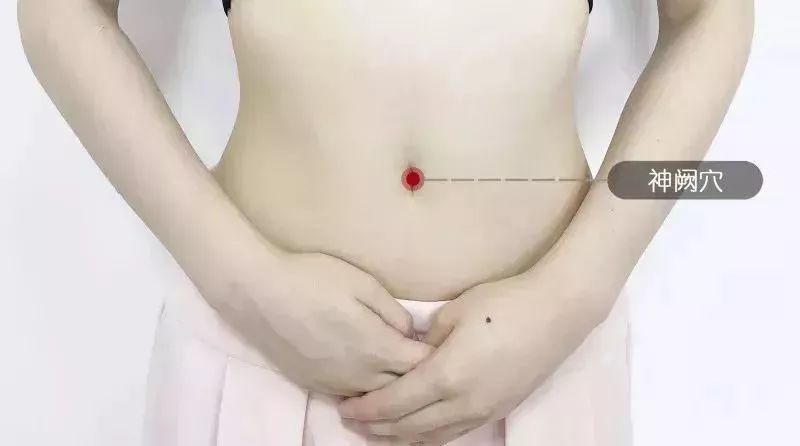
3
Moxibustion on the Guanyuan Point
【Function】 The Guanyuan point is where true Yang resides and is the place where essence and Qi are generated. Moxibustion on the Guanyuan can promote the rise of clear Yang, the descent of turbid Yin, warm the original Yang, and enrich the blood, thereby nourishing the kidneys, consolidating the foundation, replenishing Qi, and regulating the Chong and Ren channels, as well as invigorating blood circulation.
【Location】 The Guanyuan point is located on the midline of the lower abdomen, 3 cun below the umbilicus.
【Time】 Moxibustion for 10-15 minutes.
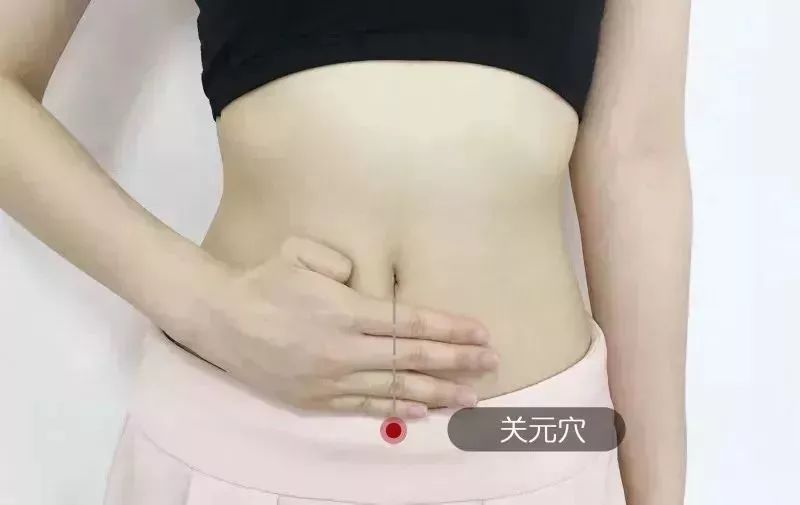
4
From the Monthly Perspective: Best to Moxibust on the 8th Day of the Month
The 8th day of the lunar month is the 8 days of Yang rising, from the new moon to the waxing crescent, and then to the first quarter moon.
During the new moon, the moon phase has not yet appeared, but the Yang energy has already begun to move, unlike the waning moon which signifies the end of Yang. This is the beginning of Yang, and although it is not yet visible, the Yang energy is entirely different.
At this time, it can be associated with the Kun hexagram, but it is at the end of Kun, where Yang begins to move. During the waxing crescent, Yang energy begins to rise, and the moon phase will become visible, hence it is associated with the Zhen hexagram, which signifies the birth of Yang energy. At this time, one should assist Yang to promote its rise.
The first quarter moon, which is the 8th day of the lunar month, has a half-bright and half-dark moon phase, where Yin and Yang are balanced. However, although the moon phase is bright, it is still waning, hence it is associated with the Li hexagram, which signifies the interaction of Yin and Yang. The Li hexagram represents both the balance of Yin and Yang and the peak of Yang, which is the understanding of the post-heaven eight trigrams.
Therefore, from Kun to Li, this is the time when Shao Yang begins to rise, and this time period corresponds to the lunar calendar from the 1st to the 8th, making it the most effective time for moxibustion in the month.
5From the Daily Perspective: Best to Moxibust Around Noon
According to the “Neijing: Ling Shu,” the ancients divided the day into four periods corresponding to spring, summer, autumn, and winter:
Morning is spring, noon is summer, sunset is autumn, and midnight is winter.
The specific time divisions are:
From 3 AM to 9 AM is the spring of the day, called Day Spring
From 9 AM to 3 PM is the summer of the day, called Day Summer
From 3 PM to 9 PM is the autumn of the day, called Day Autumn
From 9 PM to 3 AM is the winter of the day, called Day Winter
In the morning, both nature and the body’s Yang energy begin to rise; utilizing this time for moxibustion can yield twice the result with half the effort.
It is worth noting that after 11 PM, unless in an emergency, moxibustion should not be performed.
From 11 AM to 1 PM is the noon period, which is the time when the heart is active. The heart belongs to fire in the five elements, and the ancients said, “The heart works at noon.” Therefore, noon is also not suitable for moxibustion; if moxibustion is performed at noon, it can easily lead to excessive heat.
Generally, the best times for moxibustion for health care are: 10-11 AM; 2-4 PM for optimal effects.
Of course, the timing for moxibustion varies according to different constitutions and ailments.
This is closely related to the operating times of the twelve meridians. In modern times, a day is 24 hours, while in ancient times, it was divided into 12 periods, with each period corresponding to a specific meridian. This means that each period has a meridian that primarily functions and plays a major role in the body.
The 12 periods are: Zi, Chou, Yin, Mao, Chen, Si, Wu, Wei, Shen, You, Xu, and Hai. Zi is from 11 PM to 1 AM, Chou is from 1 AM to 3 AM, Yin is from 3 AM to 5 AM, Mao is from 5 AM to 7 AM… and Hai is from 9 PM to 11 PM, completing a full day.
For example, if there is a problem with the lungs, one cannot simply wake up in the middle of the night to perform moxibustion. In this case, the relationship between the exterior and interior meridians or the relationship between two meridians with the same name must be considered.
For instance, the lung meridian and the large intestine meridian are a pair of exterior and interior meridians, similar to a couple. However, the large intestine meridian operates from 5 AM to 7 AM, which is not suitable for moxibustion.
The lung meridian is the hand Taiyin meridian, and the foot Taiyin meridian is the spleen meridian. The lung meridian and the spleen meridian have a similar relationship, like brothers, with the spleen meridian operating from 9 AM to 11 AM. Therefore, performing moxibustion at this time can effectively treat lung-related issues.
The lung belongs to metal in the five elements, and according to the principle of mutual generation and restriction in the five elements, earth generates metal, and metal generates water. Following the principle of “if deficient, nourish the mother; if excessive, drain the child,” if there is excess heat in the lungs, moxibustion can be performed during the kidney meridian’s operating time from 5 PM to 7 PM, as the kidneys belong to water.
Other principles are similar and can be extrapolated. In fact, it is not a matter of whether morning or evening is better for moxibustion; the key is to consider what issue you are trying to address.
6
Precautions for Moxibustion
1. Extreme fatigue, excessive hunger, fullness, drunkenness, profuse sweating, or unstable emotions are not suitable for moxibustion.
2. Certain infectious diseases, high fever, coma, convulsions, or extreme physical weakness, such as emaciation, are contraindications for moxibustion.
3. Do not drink cold water or eat cold food during moxibustion, as this is akin to extinguishing the fire of moxibustion, which is detrimental to treatment.
4. It is best to drink a cup of warm water above body temperature before moxibustion. After moxibustion, it is advisable to drink a cup of hot water around 60 degrees Celsius, slightly hot to the mouth.
5. If you wish to wash your hands immediately after moxibustion, use hot water above body temperature, around 50 degrees Celsius. If it is not a rheumatic disease, cold diseases, or postpartum wind diseases, you can use cool water after 30 minutes of moxibustion. However, as a principle, do not rush to use cold water.
6. It is best to take a shower 20-30 minutes after moxibustion, as the meridians are generally in a state of recovery after moxibustion, and the heat from moxibustion gradually dissipates and is utilized. Taking a hot shower at this time will feel very comfortable.
Tips to Prevent Dizziness from Moxibustion
Dizziness from moxibustion, although rare, can occur and may present with symptoms such as dizziness, blurred vision, nausea, pale complexion, palpitations, and sweating, and can even lead to fainting. If dizziness occurs, stop moxibustion immediately, lie down, and apply moxibustion on the Zusanli (足三里) point gently for about 10 minutes.
Top Ten Benefits of Moxibustion on the Buttocks for Women
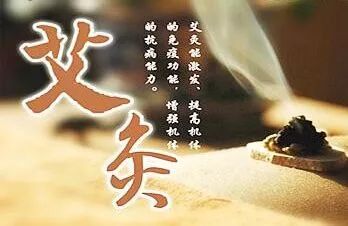
Throughout life, we either sit, lie down, or stand. In these three positions, sitting is essential for the buttocks, while lying down requires the buttocks to cooperate, and standing does not involve the buttocks.
In the human form, the buttocks are also a part of beauty and a fundamental element of the human body. Have you ever seen beauty pageants that do not consider hip circumference?
A beautiful woman can be without arms or legs and still be called beautiful (though it is somewhat regrettable), like the Venus de Milo, but it is unimaginable if she had no buttocks… The condition of the buttocks can reflect a person’s health, especially for women, which you may not know!
Gynecological issues can be observed from the buttocks!
1. Dark buttock cleft: Indicates cold in the uterus, heavy toxins, or residual lochia;
2. Darkened buttock area: (commonly known as “sunglasses”) indicates decreased hormone levels;
3. Depressed buttocks: Indicates ovarian atrophy;
4. Buttock acne: Indicates excessive toxins and dampness;
5. Cold buttocks: Indicates cold in the uterus and body;
6. Darkened waist and horizontal lines: Indicates kidney deficiency!
Modern people often work in a seated position, and prolonged sitting can lead to poor blood circulation in the waist and buttocks, resulting in blood stasis.
Therefore, if women have insufficient Qi in the governing vessel, Yang deficiency, or excessive Yin, they may experience dysmenorrhea, dark menstrual blood, blood clots, difficulty in menstrual flow, or pain in the waist, buttocks, and lower limbs, numbness, and weakness due to Qi stagnation and blood stasis.
If cold and dampness invade the buttocks and affect the pelvic cavity, it can easily lead to pelvic inflammatory disease, cervicitis, endometritis, vaginitis, urinary tract infections, and other reproductive system diseases, resulting in abnormal vaginal discharge, yellow and sticky discharge, short and painful urination, and itching with odor in the perineum, as well as discomfort in the lower back and sacral area. If cold and dampness obstruct and phlegm and blood stasis accumulate in the uterus (ovaries), it can lead to adhesions, cysts, fibroids, and other abnormalities.
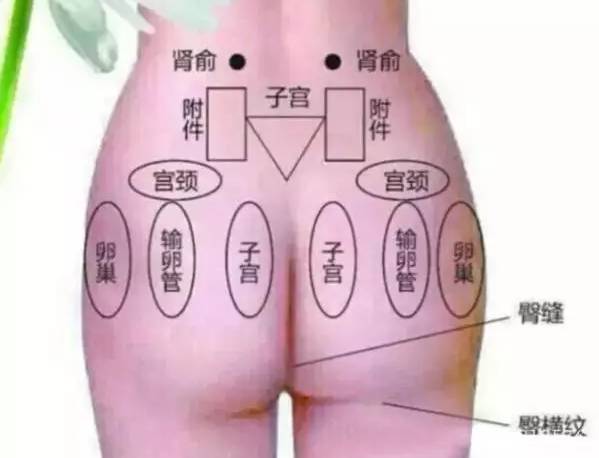
So, how can we maintain the health of our buttocks?
Methods to Keep the Buttocks Healthy
1. Keep the Buttocks Moving
If time or conditions are limited, it is important to exercise the buttocks anytime and anywhere—stretching, tapping. Here are a few exercises:
1. Butterfly Stretch
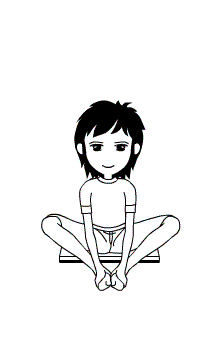
The key point of this exercise is to use the buttocks and feet as pivot points to move the legs up and down, thereby stretching the meridians of the buttocks and promoting blood circulation!
This exercise is suitable to do before bed on the bed or while watching TV on the floor.
2. Tapping the Buttocks
The greatest benefit of this exercise is that it can be done anytime and anywhere. Lightly clench your fist and tap the middle buttock meridian, large buttock meridian, or the Huan Tiao (环跳) point.
3. Kicking and swinging the legs…
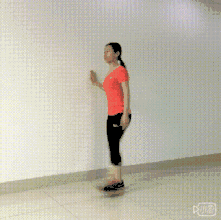
Kicking and swinging the legs… Many leg exercises are ones we did in elementary school, but now… heh heh… too lazy.
Moxibustion on the Buttocks to Expel Cold and Detoxify!
☑ Moxa is a pure Yang substance, thus according to TCM theory, performing moxibustion on the buttocks, where Yang meridians are concentrated in women, can help improve the originally Yin-cold constitution—enhancing physiological functions, tonifying Yang energy, regulating the Chong and Ren channels, and preventing and treating menstrual and abnormal vaginal discharge.
☑ Moxibustion has warming and tonifying effects, making it particularly effective in warming the meridians and dispelling cold; applying moxibustion on the foot Taiyang bladder meridian, governing vessel, and buttocks can significantly improve blood circulation in the female pelvic cavity, preventing the occurrence of uterine fibroids and cysts.
☑Additionally, moxibustion promotes Qi circulation, invigorates blood, and dispels cold and dampness.
Moxibustion raises the temperature of the buttocks,
with a 1°C increase in buttock temperature,
gynecological immune function increases by 5-6 times!
A 1°C increase in buttock temperature,
reduces gynecological disorders by 90%!
Top Ten Benefits of Moxibustion on the Buttocks
Top Ten Benefits of Moxibustion on the Buttocks
① Improves cold in the uterus, cold buttocks, and dysmenorrhea!
② Improves sexual coldness and promotes marital intimacy!
③ Opens meridians, regulates Qi and blood, and eliminates toxins!
④ Improves scanty menstruation and blood clots!
⑤ Enhances the elasticity of the uterus, vagina, and ligaments, tightening the vagina!
⑥ Regulates urinary system issues, such as frequent urination, urgency, and painful urination!
⑦ Improves cold hands and feet!
⑧ Eliminates excess fat and toxins from the pelvic floor and groin!
⑨ Improves gout, lower back pain, and kidney deficiency!
⑩ Promotes blood circulation, enhances resistance and immunity!
【Target Audience】
1. Cold buttocks, dark color
2. Dysmenorrhea, menstrual irregularities, and gynecological disorders
3. Frequent lower back and leg pain, insomnia, and poor sleep
4. Prolonged sitting, high work pressure, and insufficient energy
The sensations after moxibustion therapy are as follows:
After one moxibustion session: feel warm and the local area is heated;
After one month of moxibustion: improved complexion, more radiant skin, and increased vitality;
After three months of moxibustion: others will see health and vitality that is not common;
After one year of moxibustion: will be 5 to 10 years younger in constitution compared to peers;
After moxibustion therapy,
skin improves
menstruation becomes smooth
toxins are expelled
buttocks are lifted
no longer cold
no more lower back pain
neck, shoulder, back, and leg pain can be treated with plaster.

